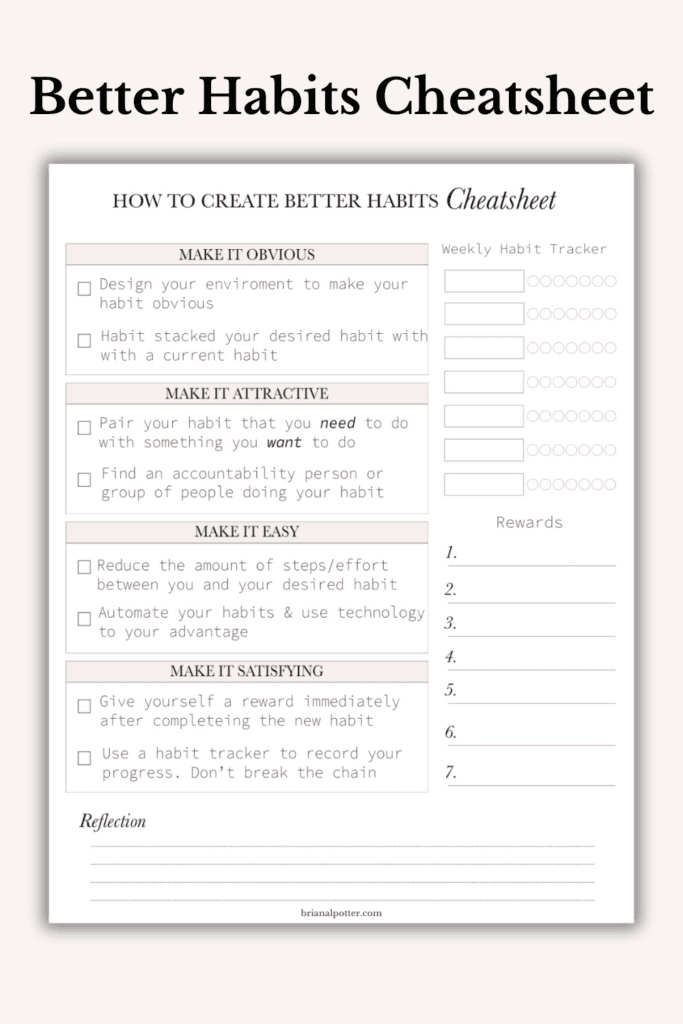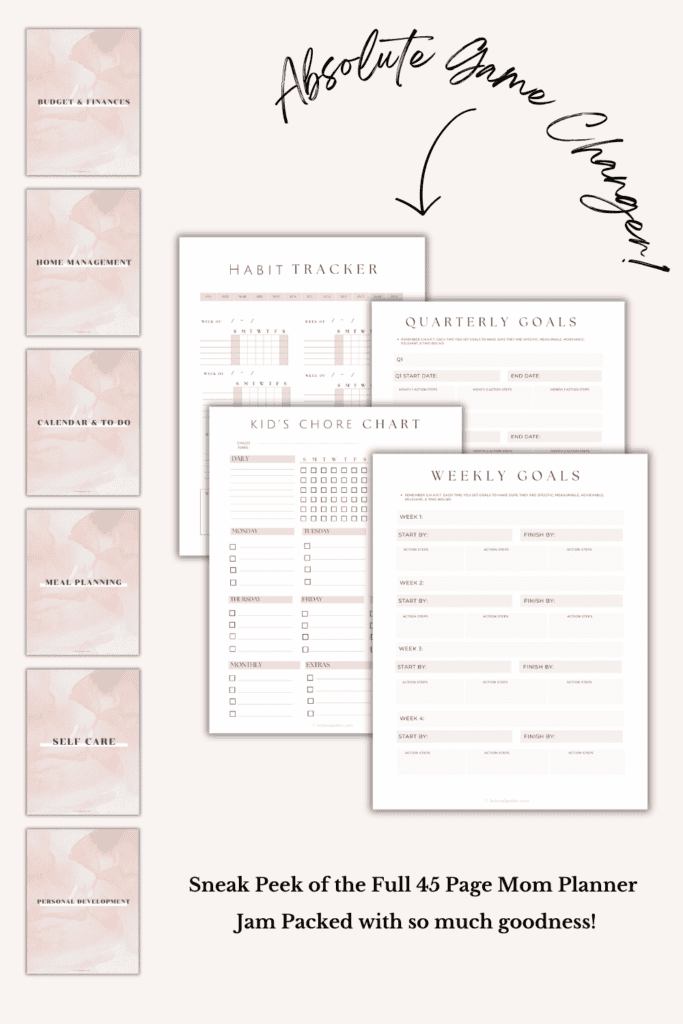This site may contain affiliate links, view the Disclaimer for more information.
Getting things done is hard and you are only as successful as your productivity system. Setting goals is important and should be done, however, it is in the productivity systems where the magic happens.

We all set goals, make plans, and stick with them for about a week. We are good about making vision boards every January only to revert by week 2 of the new year. Setting goals is easy but seeing the goal through is the hard part.
There may be many reasons a person will not see their goal through. Whether it’s a life event, a current limiting belief, or even finances. However, the most common problem is that there is little to no system in place.
You’re not alone nor are you a failure because you didn’t see your goal through. You need a productivity method that allows you to effortlessly get work done.
This post is all about creating the best productivity system to reach your goals.
Productivity Systems
The Problem with Setting Goals
Think about the goals you set and everything you accomplished last year. Did you see them all through, half of them, or even a quarter of them? I am going to be bold and say chances are you completed very little to possibly none of them.
[Related Post: 20 New Habits To Try To Elevate Your Life]
The first thing I need you to understand is there is nothing wrong with you OR the projects you had. People have common pain points with setting goals and following them through.
Some of those pain points include:
- There is no tangible plan or the plan is too vague.
- Setting annual goals often leads to procrastination and a lack of motivation.
- Set goals they are not excited about or because others want them to do it.
- There is a feeling of “having all the time in the world” when setting goals so far out in time.
- The goal is not S.M.A.R.T. but rather just a task list.
You need to create goals that excite you, are shorter in length to complete, and have due dates with the most important tasks done first. Keeping this in mind and over time, you will see that you will have completed more in 3 months than some in one year.
What is a Productivity System?
Productivity systems are methods designed to help you accomplish more/be more productive in less time. In other words, it’s a task management system that is put in place to focus on what’s important. With a well-structured and productive system, you can make the most of your time, accomplish more, and (most importantly) keep you motivated.
The four methods that helped me develop my personal productivity systems:
- Setting Quarterly goals (based on my 5 and 1-year goals)
- Setting Weekly Smart Goals (based on my quarterly goals)
- Reading Atomic Habits by James Clear
- Time Blocking My Day
I not only accomplished my goals but I started to trust myself again. I was seeing tasks through and checking them off. I can be proud of myself again. Productivity is all about your systems.
It works because it makes what seems impossible, possible. These productivity methods force you to think about time management and project management.
Understanding The Best Productivity Systems
To create your system for goal-setting, you must understand (and read) Atomic Habits by James Clear. There’s a reason why over 2 million copies were sold and changed lives.
“You do not rise to the level of your goals, you fall to the level of your systems.”
Atomic Habits by James Clear
James’s Atomic Habits is popular because it is an evidence-based self-improvement strategy. Taking a deep dive into the small, everyday actions that make up the big picture. Knowing what daily actions you need to take, allows you to act intentionally.
He outlines that habits (negative or positive) can compound, we focus too much on the goal itself, we are impatient, and we equate goal achieving with happiness. James also mentions that people put emphasis on the outcome and not the identity shift needed for success.
For example, he explains that the goal is not to read a book but to become a reader. The goal is not to run a marathon but to become a runner. Research has shown that a person’s behavior is reflective of how they see themselves.

How is this important to workflow productivity? It is important because these small (seemly) insignificant habits are reflections of how you view yourself. Thus, impacting what decisions and daily actions you take.
For me, the goal was not to write a blog post or have a blog, the goal was to become a professional blogger. To become a professional blogger, I had to identify as a professional blogger. I had to think, act, learn, and act like a professional blogger would. My daily “atomic” habits had to reflect that of a professional blogger.
I am sure you have heard of dress for the job you want, not the job you have.
How Does A Simplified System Help Increase Productivity?
Oftentimes, we think solutions have to be or should be complicated. There’s no way it can be that simple. Change my daily habits and all my wildest dreams come true? Yeah, right. But it’s true.
Changing how you view yourself will change how you move within your world. Impacting tiny daily decisions on what is important to you. When I decided that I wanted to become a professional blogger, my habits started to change. I took courses, I managed my schedule by time blocking, I created an “eat the frog first” (getting the hardest task done first) morning routine, I (tried to) scroll less on social media, and so much more.
[Post You May Enjoy: Creating The Best Alter Egos That Will Inspire You]
However, don’t mistake this as me telling you to not set goals. I firmly believe you should not only set goals but create Big, Hairy, Audacious Goals, or BHAG for short. I always say if the dream doesn’t scare you, it’s not big enough.
My BHAG is to become a six-figure blogger and CEO of a daily & goal-setting planner company in five years. That dream terrifies me and seems impossible. However, I have put a productivity system in place to almost guarantee my success. Creating and achieving goals isn’t complicated, just break it up into manageable daily tasks.
Productivity is about your systems. You cannot achieve your BHAG without a system in place to help you achieve it.
How Do I Build The Ultimate Productivity System?
Welcome to my favorite part, this is where the true fun begins. Before the fun can begin, we have to do a little soul-searching.
Answering these questions will give you an idea of what you need to change to better suit your goals.
Setting Goals
I will die on this hill, your goals need to be S.M.A.R.T. Meaning they are Specific, Measurable, Relevant/Related, and Time-Bound.
*Plugin mom planner*
Then your goals need the “how-to” or say it with me, the productivity system in place. Let’s say you didn’t set any goals but automated your savings, became conscious of your spending habits, and created a budget. You would probably become financially responsible and budget savvy.
That is the insane power of creating productivity systems. Getting things done depends on your habits and the systems that are created by them.
Creating Your Productivity System
This is what I consider the “blueprint” of your BHAG, the “HOW” of your goals. These will consist of the action steps and the daily habits.
Although, this step requires a lot of planning and research, how you see yourself should not be ignored.
Mindset & Shift
- If the goal is to run a 5K then you have to identify as a runner.
- If the goal is to be married then you have to identify as a wife.
- If the goal is to run a multi-million dollar company, then you have to identify as a CEO.
Your daily habits will reflect what you identify as. Instead of saying, “I don’t smoke.”, you say “I’m not a smoker.” Identifying as a non-smoker will change your daily habits to reflect a non-smoker.
Productivity Systems Examples:
If your smart goal is to lose 100 pounds by June 5th, 2025, then you may start calorie counting, making sure you stay in a deficit, drink more water, and make healthier choices. You’ll probably add a time block of exercise or start taking classes at your local gym.
Another person may have the goal to save $60,000 for a new family home. They might create a budget, have weekly check-ins, buy things on sale or not at all, and limit eating out (opting for making food at home).
Bob wants a side hustle to replace his $50,000 yearly salary to have more freedom. He would research a side hustle he’s interested in, begin gathering everything he needs for his side hustle, and block 30 minutes a day to focus on important tasks since he works full time. He might even sacrifice leisure activities until he achieves his goal.
A Little Every Day
Your brain loves comfort and creating new habits puts your brain outside that comfort zone. This is why you often revert back or don’t start at all. Your brain doesn’t know what is on the other side of the habit.
Creating new habits is difficult, so I recommend you habit stack. Habit stacking is where you pair a new habit with a habit you already do.
For example: I will journal for 15 minutes after I make my morning cup of coffee. You should also have a habit tracker to record each time you complete a new habit. Start small with a task you know you can 100% commit to.
How To Create (and stick to) a Good Habit (Free Cheat Sheet)
There are some tricks to make sure that when building a new habit, you’ll actually want to do it. And the same thing if you want to break a habit. Take a look at this cheat sheet.

You’ll invert this method to break a habit. Make it invisible, make it unattractive, make it hard, and make it unpleasant.
Compound Your Habits
James outlines how habits can compound for you or against you. There are productivity compounds, knowledge, and relationship compounds. Meaning that the small habits may seem insignificant but together can cause a bit impact.
Imagine that every day, you study code for 30 minutes. You won’t know how to code from that 30 minutes but imagine a year from now. Then you add in creating a portfolio and watching videos.
Working out for 30 minutes, eating healthier, and tracking your calories separately will seem small. However, together they equal weight loss, a boost in confidence, and a healthier body.
Re-evaluate Your Productivity Systems
Take out your habit tracker and find a pattern. Are you succeeding or are you falling short? You could also start bullet journaling to find patterns in your behavior.
Ask yourself what’s working, what needs tweaking, and what needs to be restructured. Do you still want to achieve this goal (it’s okay if you don’t)? Don’t waste time on what’s not important. Remember you fall to the systems you have or don’t have in place.
Lastly, Enjoy The Journey
I am the first to admit that I want to rush to the finish line. However, I think that thought process is a disservice to us. How can you appreciate the progress you’ve made and the skills you’ve built and mastered, if you wish that all away?
The systems you’ve created for yourself will support your goals. Be patient, the end result will come as long as you don’t give up. Readjust as you go along and stay consistent. Setting goals is still important but you see real growth after you implement a productivity system.
This post was all about creating the best productivity system to accomplish your goals.







6 Comments
Comments are closed.